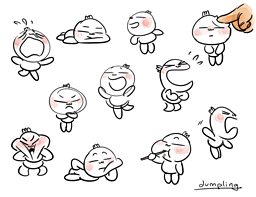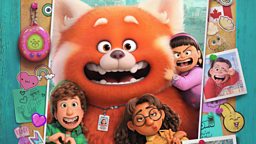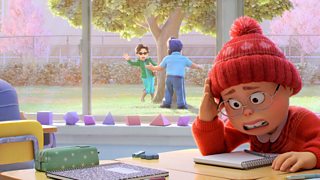Embrace your inner weirdo: Pixarâs Domee Shi on âTurning Redâ
When Pixar asked Domee Shi to create a feature film, she ran to her friend’s office and rolled on the floor with joy. It was a dream come true. But Domee had to learn how to own her unique creative voice with all eyes on her, which meant embracing her inner weirdo.

When her film, the Oscar-nominated Turning Red, was released in 2022, it immediately broke viewership records on the platform, showing Domee that her specific quirks were more universal than she thought.
Domee shared the story of creating Turning Red on the Spark & Fire podcast, available now on ´óÏó´«Ã½ Sounds
Youâll also know Domee from her Academy Awardâwinning short film
Domee wrote and directed the short film Bao, which won an Oscar for Best Animated Short Film in 2018.
I wanted to explore that sweet, creepy relationship that moms have with their kids
Bao is the story of a lonely Chinese lady who gets a second chance at motherhood when one of her homemade dumplings comes to life as a giggly little dumpling boy. And she nurses it, she raises it, she feeds it, and she has to learn to eventually let it go.
Domee drew from her own personal relationship with her mother for the film, saying, ‘I remembered this line that my mom would always say to me: “Oh, Domee, I wish I could put you back in my stomach, so I knew where you were at all times.” And I’m like, “Aw, that’s sweet, but creepy.” And I wanted to explore that sweet, creepy relationship that moms have with their kids.’

Domee’s original ending involved the mother eating her dumpling child so it could never leave her – but she worried this ending would be too weird for Pixar. She ended up pitching a more conventional happy ending. ‘The ending that I ended up pitching was the mom ends up making dumplings all night long. And in the morning she wakes up, and they’ve all come to life, and then she just lives happily ever after with a house full of dumplings.’
Her colleague at Pixar pushed back, encouraging her to stick with the ending she feared was ‘too weird’. ‘His excitement in that weird idea gave me a lot of confidence. There’s an audience for my weirdness’, she realised.
Domee used her own experiences again to create Turning Red

Domee’s next project was Turning Red, a film about a tween girl named Mei-lin Lee. Domee summarises the story on the podcast, ‘[Mei-lin] thinks she has her life completely under control when suddenly, boom, magical puberty hits one day, and she turns into a giant red panda anytime she gets emotional, angry, and worked up. And her mom wants to quickly get rid of this red panda so that her daughter can stay her perfect little girl’.
âThatâs how a lot of parents feel when their kid is leaving the nest. You want to cling to them as much as you can. Iâm just exploring that idea in, like, a very weird way.â
Like Mei-lin, Domee is an only child, which she says made her mum ‘more overprotective than your average’. One scene from the film that encapsulates that idea is pulled straight from Domee’s own life: ‘There’s a scene in Turning Red where Mei discovers, to her horror, that her mom has followed her to school and is spying on her from behind a tree with sunglasses on.
‘On the first day of middle school, I was walking out with my new friends that were like, “Who’s that lady?” And I was like, “Huh?” And I look up to see what they’re pointing at. I see my mom watching me hiding behind a tree with sunglasses on, thinking I wouldn’t recognize her.

‘That’s how a lot of parents feel when their kid is leaving the nest. You want to cling to them as much as you can. I’m just exploring that idea in, like, a very weird way.’
What Turning Red means to her now
The success of Turning Red taught Domee to set her ambitions even higher, she told the podcast. “It taught me to go big. There is an audience for these types of stories, and there’s space for people like me in this industry. I can just put my ideas out there and see what the reaction is, and then I can always reel it back later. Shoot for the sun, and then you can land on the moon.”
Maybe it’s all the ways Domee listens to her inner weirdo — or it might be how Domee finds collaborators who champion her oddball impulses and will roll around on the floor with her when she wins big. Or maybe it’s the trust Domee has that if she creates something deeply personal — including the dark and weird stuff — she’ll discover there’s other weirdos out there.

